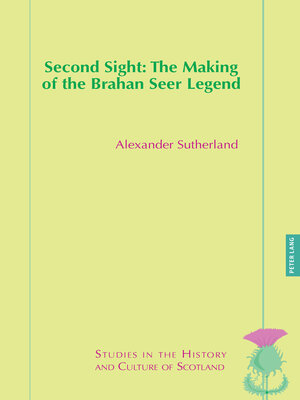Second Sight
ebook ∣ The Making of the Brahan Seer Legend · Studies In the History and Culture of Scotland
By Valentina Bold

Sign up to save your library
With an OverDrive account, you can save your favorite libraries for at-a-glance information about availability. Find out more about OverDrive accounts.
Find this title in Libby, the library reading app by OverDrive.



Search for a digital library with this title
Title found at these libraries:
| Library Name | Distance |
|---|---|
| Loading... |
«We have here a masterly, well-indexed and clear account of the evolution of the legend of the Brahan Seer over the centuries, one that will add a contextual depth in understanding to the many sources which give the prophesies attributed to him. Sutherland manages to inform his readers of the way in which tales and traditions were transmitted in Gaelic culture, on the externally generated romantic images of the Highlands as well as their appropriation by the natives.»
(Iwan Wmffre, University of Ulster)
The Brahan Seer is a legendary figure known throughout Scotland and the Scottish diaspora, indeed anywhere there are people with an interest in looking into the future. This book traces the legend of the Seer between the sixteenth and twenty-first centuries. It considers the seer figure in relation to aspects of Scottish Highland culture and society that shaped its development during this period. These include the practice of witchcraft and prosecution of witches; the reporting of and scientific investigation of instances of second sight; and the perennial belief in and use of prophecy as a means of predicting events. In so doing the book provides a set of historicised contexts for understanding the genesis of the legend and how it changed over time through a synthesis of historical events, oral tradition, folklore and literary Romanticism. It contributes to the debates about witchcraft, second sight and prophecy and the relationship between 'popular' and 'elite' culture in Scotland. By taking the Brahan Seer as a case study it argues that 'popular' culture is not antithetical to 'elite' culture but rather in constant (and complex) interaction with it.







